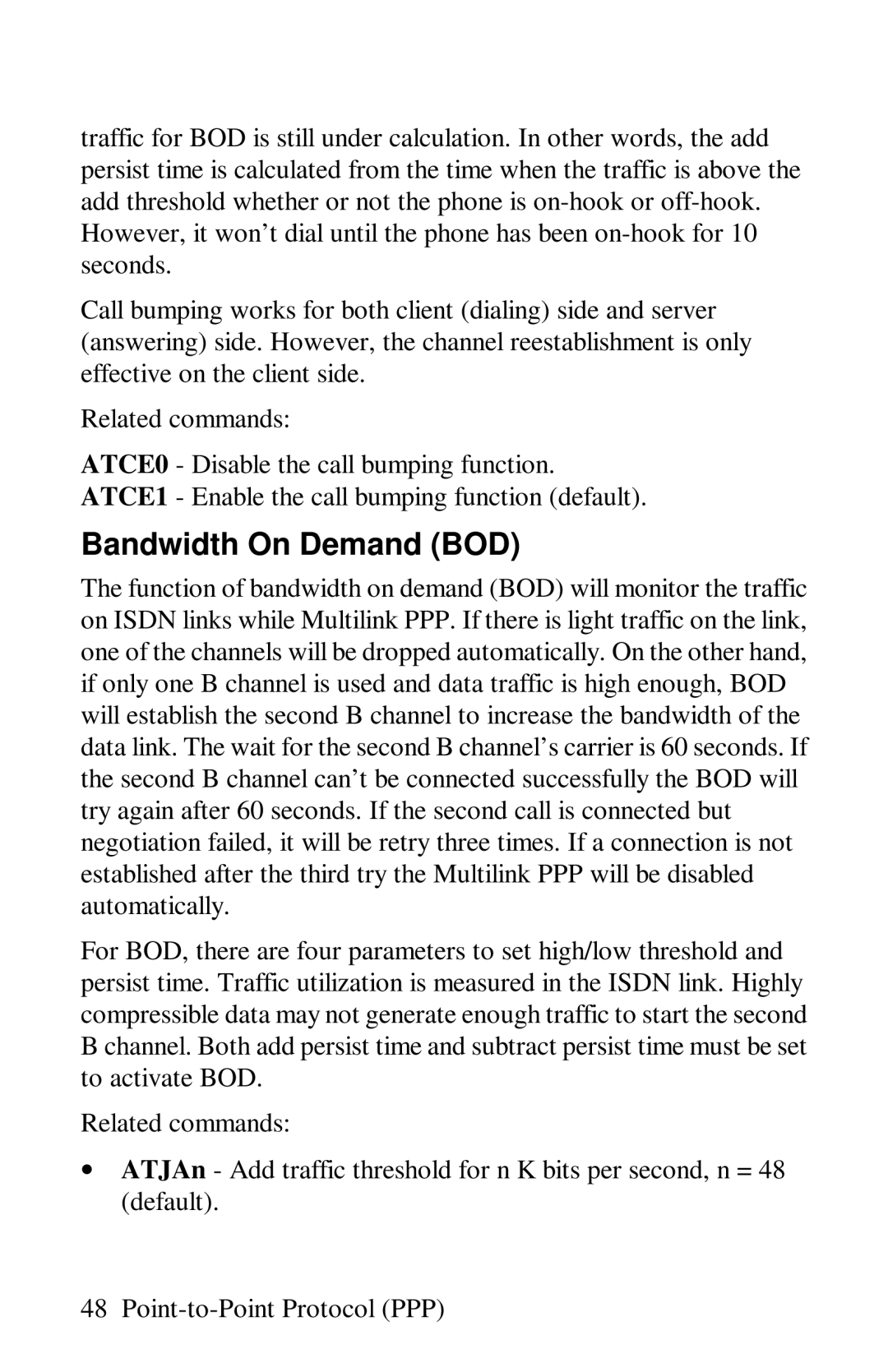traffic for BOD is still under calculation. In other words, the add persist time is calculated from the time when the traffic is above the add threshold whether or not the phone is
Call bumping works for both client (dialing) side and server (answering) side. However, the channel reestablishment is only effective on the client side.
Related commands:
ATCE0 - Disable the call bumping function. ATCE1 - Enable the call bumping function (default).
Bandwidth On Demand (BOD)
The function of bandwidth on demand (BOD) will monitor the traffic on ISDN links while Multilink PPP. If there is light traffic on the link, one of the channels will be dropped automatically. On the other hand, if only one B channel is used and data traffic is high enough, BOD will establish the second B channel to increase the bandwidth of the data link. The wait for the second B channel’s carrier is 60 seconds. If the second B channel can’t be connected successfully the BOD will try again after 60 seconds. If the second call is connected but negotiation failed, it will be retry three times. If a connection is not established after the third try the Multilink PPP will be disabled automatically.
For BOD, there are four parameters to set high/low threshold and persist time. Traffic utilization is measured in the ISDN link. Highly compressible data may not generate enough traffic to start the second B channel. Both add persist time and subtract persist time must be set to activate BOD.
Related commands:
∙ATJAn - Add traffic threshold for n K bits per second, n = 48 (default).
48
